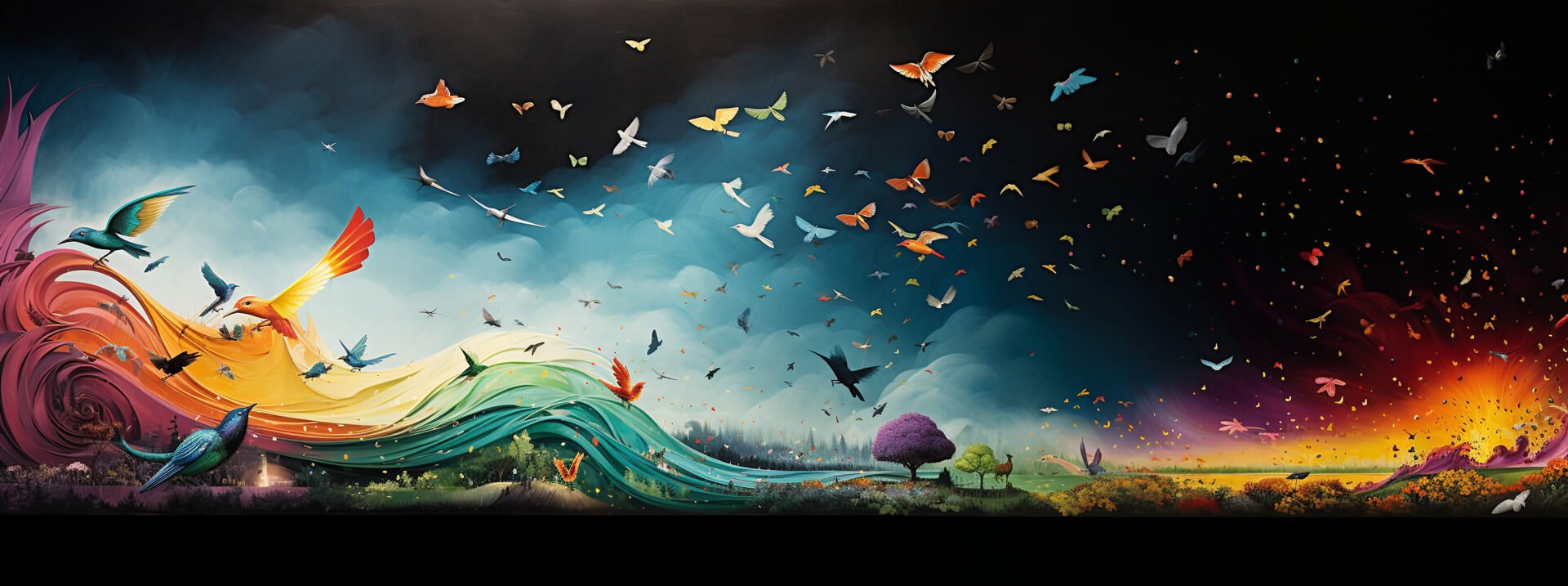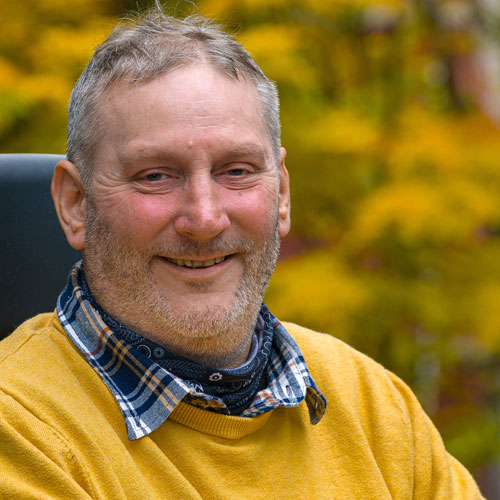As a meditation and mindfulness coach, I have a confession to make. I once held a common misunderstanding about the spiritual journey; I believed it was a path to bypass pain. However, through the crucible of my own experiences—being paralysed, heartbroken, and at times feeling hopeless—I discovered the spiritual journey isn’t about avoiding pain, but about deepening our emotional spectrum, learning how to suffer less, and enhancing joy, control, and empathy.
Let me read this to you…
[sc_embed_player_template1 fileurl=”https://stevenwebb.com/wp-content/uploads/2023/09/How-to-Suffer-Less-on-the-Spiritual-Journey-by-Steven-Webb.mp3″]
Table of Contents
Misunderstanding the Spiritual Journey
When I first embarked on my journey, I was desperate to escape my pain. I held onto a notion that spirituality was the key to uninterrupted happiness and freedom from all forms of suffering. It’s a misconception that many hold, creating unrealistic expectations and inevitable disappointment. The truth, as I came to understand, is far more profound and enriching. And it involves learning how to suffer less by embracing rather than avoiding pain.
“The spiritual journey is not about becoming someone else, it’s about becoming yourself, and that is the ultimate lesson in learning how to suffer less.”
Steven Webb
Deepening the Emotional Spectrum
The spiritual journey, particularly when explored through mindfulness and meditation, broadens our emotional spectrum. As I leaned into my practice, I found myself becoming more attuned to my own emotions and to those of others. This deepening empathy doesn’t mean we become consumed by others’ pain or our own. Rather, it allows us to experience deeper joy, gratitude, and an array of other positive emotions. I recall moments when simply observing the breath or the natural world brought a profound sense of peace and contentment. All of these experiences helped me understand how to suffer less.
My Podcast on Suffering Less
Building Resilience and Embracing Change: A Crucial Step in the Spiritual Journey
As you navigate deeper into your spiritual journey, you begin to discover an incredible transformation taking place within you: you’re building a reservoir of resilience and inner strength. This is not just a happy byproduct of the journey, but a crucial part of it. When you begin understanding how to suffer less, this resilience is what empowers you to embrace change fearlessly, rather than resist it.
Learning to Embrace the Impermanence of Life
One of the truths that meditation and mindfulness teach us is the impermanence of everything in life—the fleeting nature of pain, happiness, and everything in between. This recognition is a transformative experience. We begin to understand that our happiness is not something to clutch onto, for fear of losing it, and that our pain isn’t something to dread, for fear of being consumed by it.
As you continue to deepen your emotional spectrum, you develop the resilience to sit with all feelings—whether joyous or painful—and accept them as temporary states. In doing so, you build strength from within, allowing yourself to be okay with change. You learn that these states—joy, pain, love, fear—are all just temporary visitors. By understanding this, you can truly learn how to suffer less.
“Change is not something to fear. In the spiritual journey, it’s the stepping stone to resilience, an opportunity to grow stronger and learn how to suffer less.”
Steven Webb
Finding Strength in the Ebb and Flow of Emotions
Resilience, however, doesn’t mean becoming numb or indifferent to these emotions. It means developing a healthy relationship with them, recognising their impermanent nature, and accepting their existence without letting them define you or your experiences.
As such, every ebb and flow, every peak and valley of emotion becomes an opportunity for growth. Each moment—happy or painful—becomes a chance to deepen your understanding of yourself and the world around you. In this way, you can find strength in change and a sense of peace even amidst turmoil. This, at its core, is the essence of how to suffer less and feel more on your spiritual journey.
Resilience is the heart of the spiritual journey. It is not just surviving the storm, but learning to dance in the rain, thereby truly understanding how to suffer less.
Steven Webb
The Concept of the Happiness Line
In my journey, I’ve come to understand what I call the ‘happiness line.’ This concept posits that our baseline of happiness lies in the mundane, the normal, the everyday. We continually fluctuate above and below this line. Being ‘happy’ is an emotion that sits above this line. It’s a temporary state, not a constant one, which is why we cannot—and should not strive to—be happy all the time. Understanding this helped me suffer less by accepting the natural ebb and flow of emotions.
Reducing Suffering, Not Pain
The spiritual journey isn’t about eliminating pain, but reducing suffering. There’s an important distinction between the two. Pain, in many forms, is an inevitable part of life. Suffering, however, arises when we allow that pain to control us, to influence our actions and reactions. Through mindfulness, we can learn to observe our pain, accept its presence, and respond to it with wisdom. This is a key aspect of how to suffer less. This doesn’t mean the pain disappears, but its power over us diminishes.
Spiritual Journey: A Lonely but Rewarding Path
The spiritual journey is a solitary one. It’s a deeply personal voyage into the self, not a trip to be undertaken with companions. While this path can feel lonely, the rewards are unparalleled. The increased control over my reactions, the deep empathy I feel for myself and others, and the profound joy I experience in ordinary moments—these are the treasures of my spiritual journey.
As I navigated my path, every step steeped in meditation and mindfulness, I realized that this journey isn’t about feeling less, but about feeling more. It’s about opening oneself to the entire spectrum of human emotion and learning to navigate those feelings with grace, understanding, and wisdom. From this perspective, we can truly learn how to suffer less. Suffering lessens, joy deepens, and a heartfelt empathy arises for not just one’s own experiences, but those of all beings.
So, to those embarking on or walking this spiritual path, remember: the journey is not about avoiding pain. It’s about feeling more, learning how to suffer less, and discovering the profound beauty of living fully in each moment.

“Spiritual bypassing is a term I coined to describe a process I saw happening in the Buddhist community I was in, and also in myself. Although most of us were sincerely trying to work on ourselves, I noticed a widespread tendency to use spiritual ideas and practices to sidestep or avoid facing unresolved emotional issues, psychological wounds, and unfinished developmental tasks.”
John Welwood
What is a spiritual journey in the context of suffering less?
A spiritual journey in the context of suffering less is about embracing the full range of human emotions, cultivating resilience, and learning to navigate change with grace and wisdom. It isn’t about avoiding or eliminating pain but about understanding and accepting its transient nature. This understanding can help reduce suffering and enhance joy, empathy, and control over our reactions.
How does a spiritual journey help reduce suffering?
By promoting mindfulness and deeper emotional understanding, a spiritual journey helps reduce suffering by teaching us to respond to pain with wisdom rather than allowing it to control our actions and reactions. It fosters resilience and an acceptance of the transient nature of all feelings, helping us to embrace change without fear.
What is the role of resilience in a spiritual journey?
Resilience is a crucial aspect of the spiritual journey. It’s what empowers us to embrace change fearlessly and maintain our equilibrium even when confronted with difficult emotions or experiences. By developing resilience, we learn to sit with all feelings—whether joyous or painful—and accept them as temporary states, which is a key part of learning how to suffer less.
What is spiritual bypassing?
Spiritual bypassing is a term coined by psychologist John Welwood. It refers to the use of spiritual practices and beliefs to avoid confronting painful feelings, unresolved wounds, and developmental needs. It’s a kind of defense mechanism, denying the reality and importance of our human experience and emotions in the name of transcendence or enlightenment.
Why isn’t spiritual bypassing a good thing?
Spiritual bypassing can hinder our growth and healing because it encourages us to ignore or repress our true emotions in favor of perceived spiritual ‘ideals.’ It leads us to deny and avoid our pain rather than face it, which can prolong our suffering. A genuine spiritual journey acknowledges the full spectrum of human emotions, including pain, and teaches us to navigate them with wisdom and acceptance, thereby truly learning how to suffer less.

